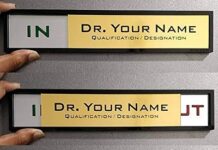Perspectives and insights on COVID-19 were obtained from foremost doctors belonging to different medical specialties who are closely involved with India’s fight against Coronavirus. The objectives were to understand trends in disease epidemiology; symptom and case patterns; management approaches and clinical outcomes; future focus areas and actionable points; and upgrading of various management aspects including testing and diagnosis, contact tracing, isolation options, and treatment modalities.
The discussion was conceived and moderated by Dr Varsha Narayanan, section editor, The Indian Practitioner.
Expert panel:
Dr Ram Gopalakrishnan – Senior Consultant, Institute of Infectious Diseases, Apollo Hospitals, Chennai
Dr Desh Deepak – Consultant Chest Specialist, Ram Manohar Lohia Hospital, New Delhi
Dr Manish Munjal – Consultant ENT Specialist, Sir Ganga Ram Hospital, New Delhi
Dr S.M. Kadri – State Surveillance Officer, Integrated Disease Surveillance Programme, Kashmir, UT of Jammu and Kashmir
- With regards to testing, so far, the recommendation is to test symptomatic patients with travel history or such contact history/suspicion and also test asymptomatic direct and high-risk contacts of confirmed COVID cases. However, with the emergence of community spread, how can we proceed with respect to expanding the testing strategy and improving testing rates?
Dr Ram Gopalakrishnan: Expand PCR testing to all patients that require admission with all types of respiratory illnesses (e.g. pneumonia, ARDS). Also expand PCR testing to all patients that require admission for any febrile illness without obvious source like UTI/soft tissue infection etc. Roll out serological tests widely for above indications, for contact testing and to all HCW to assess immunity.
Dr Desh Deepak: Current testing strategy is aimed at optimizing the use of available PCR kits and the focus has been on containment. Efforts are being made to make more PCR kits available. Recent approval of rapid IgM/IgG antibody tests is one way of expanding the testing. As antibody tests are point of care, they can be used for screening. Then PCR can be used as secondary test as per clinical need. Antibody test can be repeated after suitable time interval where required.
Dr Manish Munjal: The testing strategy in India should be conducted in 2 modes- Firstly to ascertain the spread from known positives and knowing the chain, and thus halting the spread. For this, vital chain is to be functional with easily available rapid kits, so that the chain link of detection and exclusion is maintained. Secondly to do random community sampling to understand the earliest possible community transmission, and then subsequently identifying, isolating and treating hotspots.
Dr S.M. Kadri: Through my observations, there will be expansion within the current test strategy by increasing it at a community level. This will further increase rapid testing measures and the confirmation via RT PCR with the involvement of more private laboratories.
- With increasing cases and load on health care facilities, is home-treatment/care feasible and practical in India for mild COVID symptoms, which is likely to comprise more than 80% of cases? What should be the criteria for imperative hospital admission, and what instructions should be given to patients and caregivers to ensure home isolation and prevent neighborhood spread?
Dr Ram Gopalakrishnan: Just like we do for H1N1 influenza category A and B1, (fever, sore throat symptoms, without breathlessness, drowsiness, or inability to feed orally, and without underlying medical illness/risk factors) home treatment is a must for all mild cases. Categories B2 and C (high grade persistent fever, breathlessness, drowsiness, inability to feed orally, or with underlying medical illness/risk factors) in the current influenza categorization, can be used to decide on hospital admission. Government notification of cases treated as outpatient or after discharge will trigger home quarantine, social distancing and contact tracing.
Dr Desh Deepak: If the cases continue to rise, we would need to make judicious use of our hospital resources. Various governments have already planned conversion of stadiums and other buildings into facilities where mild cases can be managed. However, if there is tremendous increase in cases, we may have to categorize as A, B, C as we do for H1N1 influenza cases and advise home management with strict isolation, with care being taken by family members. The challenges would be many. Those who do not have social support would still need institutional management. Simple indicators of worsening that can be picked up by lay public would need Information, Education and Communication (IEC). Administrative steps like developing triage centers within locality, using local doctors can be developed, who can guide whether patient needs home management, peripheral facility, or hospital care. We can also use technology-based solutions for home monitoring. Similarly, simple parameters and tools can be used for shifting patients from mild care to hospital care. Existing scores for pneumonia like CURB 65 can be modified to suit peripheral needs. Most of the cases will have to be managed locally with only severe going to tertiary care centers.
Dr Manish Munjal: Home treatment is Imperative as it takes care of isolation and psychological support easily at the same time, the medical management being almost identical to at home flu management.
The ones needing admission are severe symptomatic cases, like breathing difficulty, extreme myalgias, organ dysfunctions or ones with host factor issues like immunity challenged individuals such as diabetics, obese, post-transplant cases and extreme age groups (>65). A complete isolation guide in the form of a manual is the need of the hour as its almost impossible to teach the principles of contamination prophylaxis to non-medicos.
Dr S.M. Kadri: There is currently no specific treatment for COVID-19, so as recommended by various health professionals home quarantine for 14 days and a further 14 days of surveillance. This is done after giving proper awareness to the suspect and caregivers. All suspects are to wear a triple layer mask to help reduce droplet transmission and to change cover after 4-6 hours frequently. Handwashing with soap and water is also recommended to reduce further transmission. In terms of neighbourhood spread, ensure caregivers are only going out in the community for essential items, such as food, water, medication etc., and there should be limited contact with family members or friends outside the household to minimize further contacts.
- What are the drugs currently being used in the Indian setting, and for what indications and situations in COVID? What has been the immediate and long-term benefits seen with these drugs?
Dr Ram Gopalakrishnan: Hydroxychloroquine is the only drug widely used, with some anecdotal use of immunomodulators like steroids and tocilizumab. It is too early to assess benefit; even retrospective data is not available.
Dr Desh Deepak: Hydroxychloroquine is being used, both for prophylaxis of healthcare workers and treatment of patients. Contraindications like prolonged QTc, Porphyria, G6PD deficiency, retinopathy etc and drug interactions have to be taken care of. Lopinavir/Ritonavir was used initially but is no longer recommended. Azithromycin and Oseltamivir are being started at the presentation for the care of other possible causes of ILI (Influenza Like Illness). Remdesivir is being used in United States. Ivermectin has been found to be promising in recent studies. Other drugs like Favipiravir, Arbidol, Sofosbuvir and Ribavirin are also being studied for this purpose. There are reports of successful use of convalescent plasma from United States.
Elderly people with comorbitdiies are the most susceptible population. Others are generally responding well, so it is difficult to say whether it is the effect of medication or supportive therapy. No significant adverse effects have been noted except for anecdotal reports of cardiac events. Caution is being observed in patients with cardiac disease.
Dr Manish Munjal: There is no current evidence from RCTs or evidence from literature to recommend any specific treatment for suspected or confirmed patients with COVID – 19. Drugs most commonly being used with some evidence though without RCT data are Antivirals (mainly protease inhibitors- Lopinavir/ Ritonavir, Remdesivir etc) and Antimalarials (Chloroquine & Hydroxychloroquine) along with Azithromycin.
As per the MOHFW guidelines, administration of Lopinavir/ Ritonavir is to be considered in Laboratory confirmed cases of COVID–19 for symptomatic patients with presence of any of the following- Hypoxia, Hypotension, New onset organ dysfunction (one or more of Increase in creatinine by 50% from baseline, GFR reduction by >25% from baseline or urine output of <0.5ml/kg for 6 hrs, Reduction of GCS by 2 or more, Any other organ dysfunction), High Risk groups (Age> 60 yrs, Diabetes Mellitus, Renal Failure, Chronic Lung disease or Immunocompromised persons). Lopinavir/ Ritonavir (200 mg/ 50 mg) is dosed as 2 tablets twice daily. For patients unable to take medications by mouth Lopinavir 400mg/ Ritonavir 100 mg as 5ml suspension twice daily may be used. Duration of treatment is 14 days or for 7 days after becoming asymptomatic.
Dr S.M. Kadri: Current drugs which have been in use include Hydroxychloroquine, Oseltamivir, Azithromycin used for both prophylaxis and treatment.
- Are there any environmental or host factors for COVID in India which differentiate the intensity and pattern of disease and response to treatment of our patients, from those of Western patients (like EU-USA)?
Dr Ram Gopalakrishnan: The biggest difference between India and the west is that we have a younger population, and it is well established that COVID causes morbidity and mortality only in older patients or those with co-morbidities. However, we still have large absolute numbers of old and co-morbid patients because of our population.
Dr Desh Deepak: Countries with early stringent measures have fared better. Surveillance and containment were established early in India. Though there have been setbacks, yet it has been effective, if we see the trajectory of case progression. Asymptomatic carriers have been found as community transmission sets in. POC testing will make picture clearer as more people are tested. There is a possibility that universal BCG immunization in India will improve the prognosis of this pandemic in our country as BCG vaccination is considered to improve immune response, a study to this effect has been started in Australia. Hygiene hypothesis states that childhood exposure to microbes especially helminths may shift the immune response to producing cytokines that inhibit inflammatory response and thus decrease the severity of certain disorders. It remains to be seen whether this holds true for COVID.
Dr Manish Munjal: Environmental factors like Heat & Relative humidity in the approaching summer months might help in breaking the transmission chain. Host factors seen in some studies are pointing towards BCG vaccination which might offer some protection to Indians and eventually lead to less morbidity and mortality than the western populations against COVID-19.
Dr S.M. Kadri: The ‘Global Virus Network ‘ has predicted that weather modeling can explain spread of COVID-19 Their observation is that the spread of COVID-19 is along a narrow corridor of 30-50″ N at consistently similar weather conditions of 5 to 11 degree Celsius and 47% to 79% humidity. They also suggested that a temperature rise of 12 degrees Celsius or higher, may make the viral transmission difficult. A study in China also found that that the virus transmission is best at a temperature 8.72 degree Celsius and with every 1 degree rise in minimum temperature, the total number of cases go down. So, what will be the fate of the virus in higher temperature of our country is a valid speculation. We didn’t have a single casualty in MERS epidemic in 2012, which was also caused by a deadly Coronavirus.
- Is there evidence to suggest any long-term effects on health in COVID-recovered patients? If Yes, what are those, and any points of care to be adopted by such patients?
Dr Ram Gopalakrishnan: Only severely ill patients with ARDS may have residual side effects, not mild or moderately ill patients. Standard physiotherapy and rehabilitation for post ARDS patients will help
Dr Desh Deepak: There are no indicators to suggest any long-term effects as of now. The long-term effects are more likely to be due to the damage caused rather than the causative organism. Patients who recover from ARDS are likely to have the sequalae as is seen with ARDS of any other cause.
Dr Manish Munjal: Long-term breathing difficulties after recovery and some irreversible damage to the lungs have been observed.
Dr S.M. Kadri: There is no evidence of such data as yet and is too early to comment.
- What is the ideal protective gear that Doctors and Health care workers should use while treating COVID patients? Any prophylactic and precautionary measures to be taken by HCWs in addition to the PPE itself?
Dr Ram Gopalakrishnan: For treating confirmed or strongly suspected COVID patients, HCW should wear full PPE (N95 mask, cap, full gown, eye shield, shoe cover), use hand hygiene liberally and keep these patients in a negative pressure room. For routine patient care, a mask for all patients on hospital or clinic entry is mandatory and the HCW should wear a mask, stay >2 m away from the patient and not perform a physical exam. If physical exam is essential, hand hygiene before and after patient contact and gloves are advisable
Dr Desh Deepak: Various agencies like WHO (World Health Organization), NCDC (National Center for Disease Control) and MoHFW (Ministry of Health and Family Welfare) have advised the suitable protective gear for different clinical locations and the advisories are grossly similar. Use of Polypropylene (or a similar material), non-woven water-resistant material coveralls with N95 masks are suitable for core areas. PAPRs (Powered Air-Purifying Respirators) may be ideal in high aerosol generating situations, however, availability of any protective gear is an issue as the world is getting gripped by the pandemic. Methods to reuse PPE (Personal Protective Equipment) are being devised. Covering the N95 masks with surgical masks that can be changed in between patients may be a conservative strategy.
Hydroxychloroquine prophylaxis is being used for HCWs as it maintains levels in lung tissue for long time. Observing hand hygiene and strict compliance with PPE recommendations are of utmost importance to safeguard HCWs. It cannot be overemphasized, as any shortcoming not only leads to health personnel falling sick, shortage of trained manpower but also has the potential to make healthcare facilities as the hub of viral transmission.
Dr Manish Munjal: Ideal protective equipment for doctors in OPDs and clinics include N95 masks, Protective eye goggles, Vizor, Cap, Gloves, Protective gown and Shoe covers. Full Hazmat suits for ICU doctors is important. In addition to PPE, Chloroquine and Hydroxychloroquine is recommended by ICMR for all healthcare workers managing COVID patients.
Dr S.M. Kadri: Ideal protective gear is the Universal PPE for the HCWs working in the isolation wards, laboratories while taking samples from the suspects and contacts of COVI-19. Rationale use of work force in the COVID-19 Hospitals and change of shifts.























